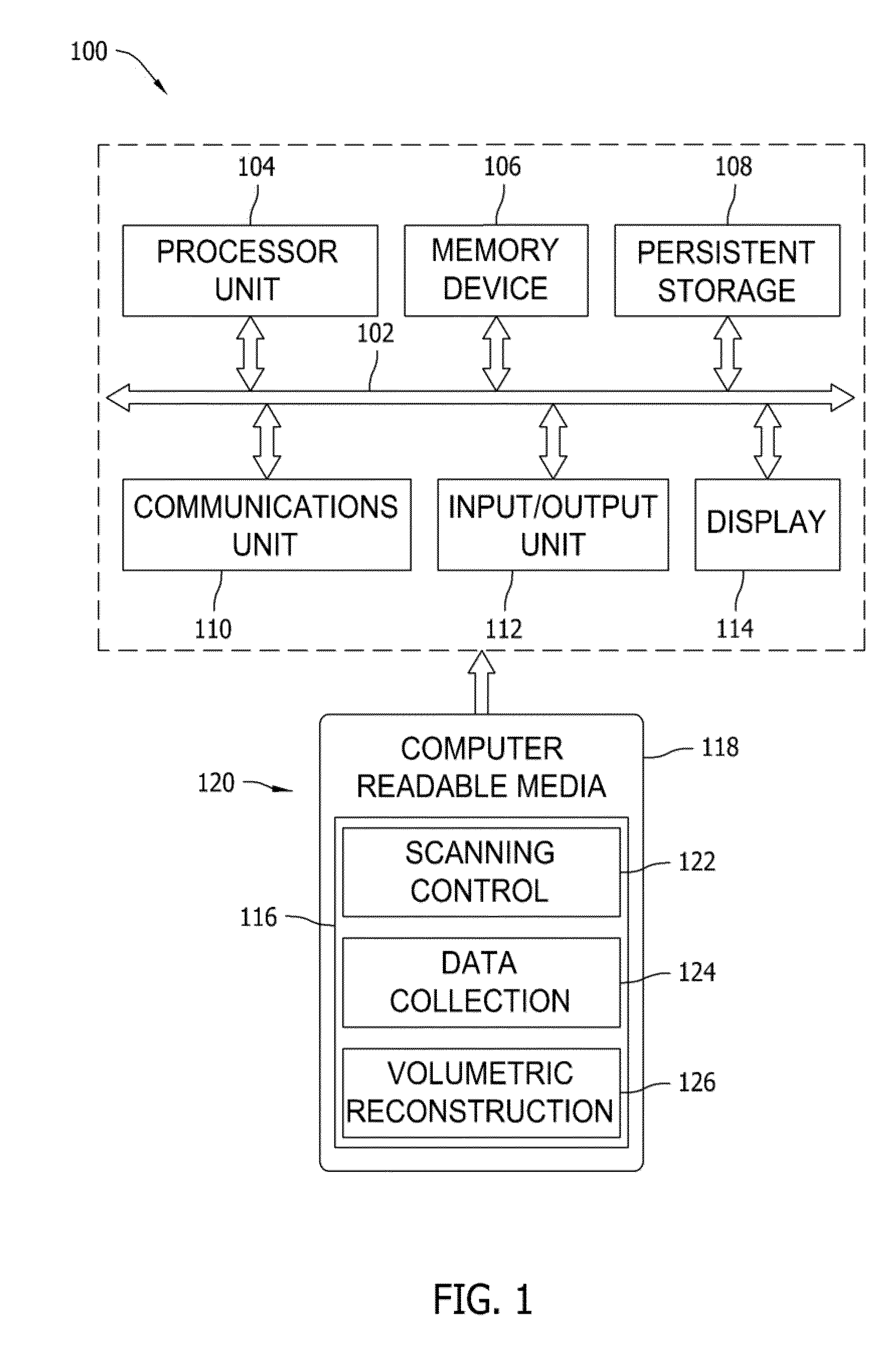Methods and systems for volumetric reconstruction using radiography
a volumetric reconstruction and radiography technology, applied in the field of radiography, can solve the problems of limited use in some products, two-dimensional images cannot be used to generate three-dimensional images,
- Summary
- Abstract
- Description
- Claims
- Application Information
AI Technical Summary
Benefits of technology
Problems solved by technology
Method used
Image
Examples
Embodiment Construction
[0017]Embodiments described herein facilitate the volumetric reconstruction of objects using scattered X-ray radiography. More particularly, embodiments described herein enable a three-dimensional (“3D”) image or volumetric reconstruction of an object to be generated from scattered X-rays.
[0018]Three-dimensional data is acquired by directing an X-ray beam into an object. One or more detectors are configured to measure the scattered X-rays produced by the X-ray beam in the object. X-rays are directed into the object from a plurality of angles and / or positions such that the one or more detectors may measure the scattered X-rays from a plurality of perspectives. Data collected by the detectors and a pre-determined geometry of the detectors with respect to the X-ray source are used to generate a 3D image of the object.
[0019]The 3D image of the object may be generated using a 3D extension of the two-dimensional (“2D”) Radon Back Projection. A ray tracing methodology is used to assign con...
PUM
| Property | Measurement | Unit |
|---|---|---|
| volume | aaaaa | aaaaa |
| backscatter imaging | aaaaa | aaaaa |
| depth | aaaaa | aaaaa |
Abstract
Description
Claims
Application Information
 Login to View More
Login to View More - R&D
- Intellectual Property
- Life Sciences
- Materials
- Tech Scout
- Unparalleled Data Quality
- Higher Quality Content
- 60% Fewer Hallucinations
Browse by: Latest US Patents, China's latest patents, Technical Efficacy Thesaurus, Application Domain, Technology Topic, Popular Technical Reports.
© 2025 PatSnap. All rights reserved.Legal|Privacy policy|Modern Slavery Act Transparency Statement|Sitemap|About US| Contact US: help@patsnap.com



